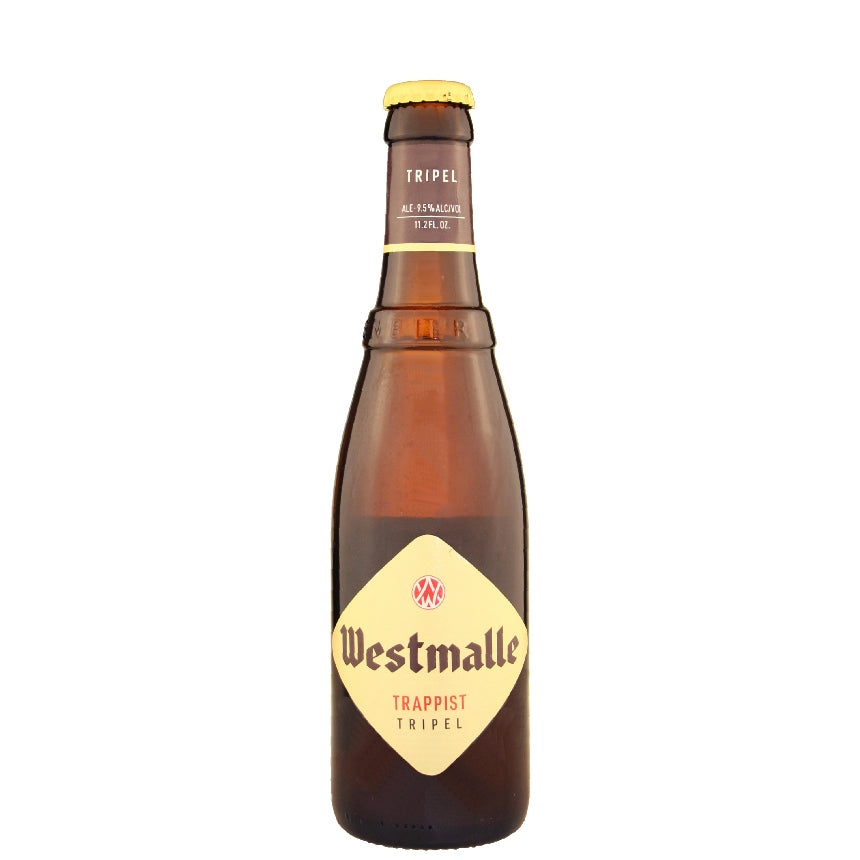Westmalle Tripel Trappist Ale 11.2 oz
Westmalle Tripel Trappist Ale 11.2 oz is backordered and will ship as soon as it is back in stock.
Couldn't load pickup availability
Belgian Golden Strong Abbey Tripel
Brewed by: Westmalle Abbey
Country: Belgium
Style: Abbey Tripel
ABV: 9.5%
Ratebeer.com rating: 99
BeerAdvocate.com rating: 95
Westmalle Tripel (ABV 9.5%) is a deep golden yellow Trappist ale with a complex aroma of fruit and hops. Soft and creamy in the mouth, some bitter hoppiness is balanced by a delicate sweetness with the suggestion of orange. 11.2 oz (capped) bottles.
Brewery Information:

Westmalle Abbey (Abbey of Our Lady of the Sacred Heart): Westmalle, Belgium
The Trappist Abbey of Westmalle or Abdij van Onze-Lieve-Vrouw van het Heilig Hart (Abbey of Our Lady of the Sacred Heart), which belongs to the Cistercians of Strict Observance (Trappists), is located in Westmalle, in the province of Antwerp, Belgium. The abbey is famous for its spiritual life and its brewery, which is one of few Trappist breweries in the world. The three pillars of life in the Trappist monastery are prayer, community and work.
In 1791 in the aftermath of the French Revolution, Augustinus de Lestrange Dubosc, the novice master of La Trappe Abbey, left France where monastic life had been prohibited, and went to Switzerland, settling in the empty Carthusian monastery of Val-Sainte. As the Swiss limited the number of monks to 21, and the refugees from France kept flowing in, Lestrange decided to send monks abroad to create new settlements. Eight of these were invited by the Bishop of Antwerp to found a new Trappist monastery at Westmalle, in 1794. Despite setbacks during the early 19th century, caused by war and political suppression, Westmalle survived, eventually being elevated from a priory to an abbey in 1836.
Trappist regulations allow the monks to drink the popular local beverage with their meals (besides water), which in Flanders is beer. In order not to have to buy beer, they decided to brew it themselves. In 1836 the abbot Martinus Dom constructed a small brewery, and in December of that year the monks served their first brew of Trappist beer at lunch. During the 19th century Westmalle continued to grow and to nurture daughter houses, including Achel Abbey.
During the 20th century the abbey and its monks survived the two World Wars. A new brewery was built and the production of Trappist cheese was begun with milk from the abbey's own cows. Today the Trappist abbey of Westmalle remains a remarkable element in the village of Westmalle and continues to produce beer and cheese with an emphasis on high quality and good working conditions for their workers. The monks at Westmalle are responsible for their own livelihood. In contrast to other breweries, making a profit is not their objective. Hence they spend what is left over on charitable work, helping people in need.




